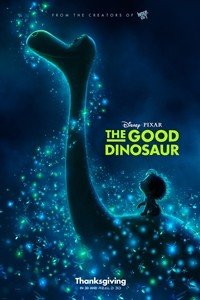 ‘The Good Dinosaur’ visually roars, but the story does not soar
‘The Good Dinosaur’ visually roars, but the story does not soar
Director: Peter Sohn
Starring: Jeffrey Wright, Frances McDormand, Steve Zahn, Anna Paquin, Sam Elliott, and Raymond Ochoa
“We aim above the mark to hit the mark.” - Ralph Waldo Emerson
A young and impressionable kid named Arlo (Raymond Ochoa) repeatedly tries - via his mother (Frances McDormand) and father’s (Jeffrey Wright) guidance – to make his mark in the world. Regrettably, he continually falls short, but the problem is not his aim. Fear – seemingly miles tall and wide – stands as the main obstacle in his path. Of course overcoming one’s fears is a plot device used in cinema for a hundred years, and – for a change of pace - this movie is set millions of years ago to convey its messages and life lessons.
You see, Arlo is a well-intentioned, walking and talking dinosaur, and the gang at Pixar present a film with an interesting premise: the asteroid which allegedly killed off the dinosaurs harmlessly flies by Earth instead. Dinosaurs then evolve to be farmers and/or ranchers and roam the planet with their less advanced human counterparts. Many of the movie’s opening scenes throw us into a state of pleasant confusion as a gentle Brontosaurus family tends to their corn farm in a warm valley which rests near the base of the Clawtooth Mountains. They dig trenches, plant seeds and water their crops with great efficiency and care, and life seems wonderfully serene in the Quaternary Period. During these nice moments, the audience also braces for conflict to arise, and it rests with Arlo’s internal, aforementioned struggle to make a difference or make his mark.
Disappointingly, the film turns into a one-note story in which Arlo becomes lost and needs to discover his inner strength to find his way back home. We have seen these narratives before, and “The Lion King” did a much better job through intriguing side-characters, memorable music and increased tension with a nasty betrayal inside the family circle. In “The Good Dinosaur”, Arlo is simply scared to try most anything, including feeding the chickens each morning, so the filmmakers set a low bar for the movie’s eventual conflict resolution.
The strength of the film is not Arlo’s internal strife, but the relationship between Brontosaurus and his new found human, a small boy named Spot (Jack Bright). Director/co-writer Peter Sohn reverses expected roles as Spot – an orphan – acts, walks and howls like a dog and becomes Arlo’s trusty companion. Many moments of whimsy and strange wonder appear on-screen as Spot runs on all fours, sniffs out various scents, growls, and brings his master various items to eat. Sometimes the scenes generate genuine belly laughs, other times, they offer some head-tilting flashes of strange curiosity. At one point when Spot stops to howl - because he misses his human family – we realize his behavior is 100 percent canine.
Arlo on the other hand sports a Gumby-like green hide and an almost equally Gumby-like pliability. With Arlo’s limbs clumsily flopping along the rough terrain, he needs Spot’s “wilderness smarts” and nifty dog-like nimbleness to get out of various sticky situations. Their relationship encounters some struggles, but the growth of their friendship entertains. They meet some friends and foes along the way but - quite frankly - neither quite connect. Some senses of bonding and danger appear on their travels, but, ultimately, because of the singularly and simply-focused goal of just getting back home, any appreciation of alliances or fights feel recycled and rehearsed. Instead of the film drawing me into the adventure, I became distracted trying to figure out which movie stars were lending their voices. I had to wait for the credits to find out Steve Zahn and Anna Paquin made appearances but found no trouble discerning Sam Elliott’s wonderfully distinctive cadence and pitch as a Tyrannosaurus rex named Butch.
I must say Pixar “penned” some amazing animated constructs of the period’s wilderness. Some of the cartoon designs of rain, river rapids with waterfalls and evergreen trees littering the background truly astonish. “The Good Dinosaur” is a spectacular picture from a purely visual perspective but does not aim high enough to make its mark. (2.5/4 stars)

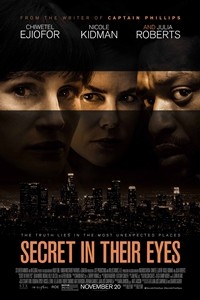 ‘Secret in Their Eyes’ retells an intriguing story but will not repeat an Oscar win
‘Secret in Their Eyes’ retells an intriguing story but will not repeat an Oscar win
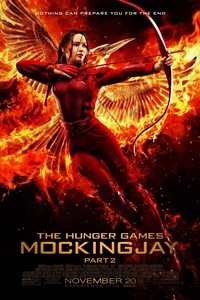 Hunger Games: Mockingjay — Part 2
Hunger Games: Mockingjay — Part 2
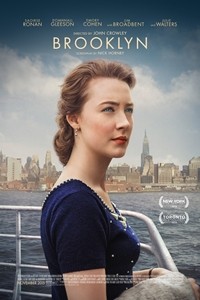 ‘Brooklyn’ never looked so beautiful
‘Brooklyn’ never looked so beautiful
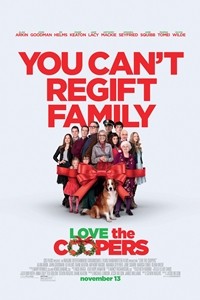 A crowded narrative makes it difficult to ‘Love the Coopers’
A crowded narrative makes it difficult to ‘Love the Coopers’
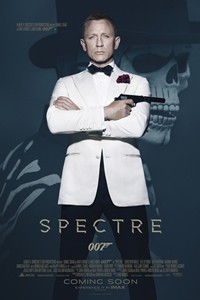 Spectre
Spectre
 The Peanuts Movie
The Peanuts Movie
 ‘Miss You Already’ mixes tones but tells a memorable breast cancer story
‘Miss You Already’ mixes tones but tells a memorable breast cancer story
 Scouts Guide to the Zombie Apocalypse
Scouts Guide to the Zombie Apocalypse
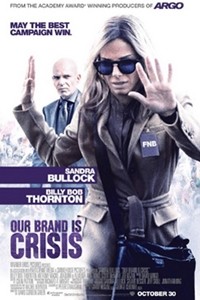 The political film ‘Our Brand Is Crisis’ inexplicably mixes messages
The political film ‘Our Brand Is Crisis’ inexplicably mixes messages
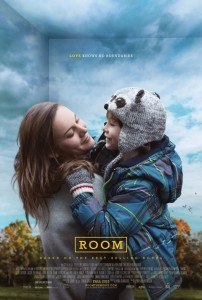 Room
Room
 Rock the Kasbah
Rock the Kasbah
 ‘Bone Tomahawk’ tosses an exceptional, gritty and gory western onto big and small screens
‘Bone Tomahawk’ tosses an exceptional, gritty and gory western onto big and small screens
 “’The Last Witch Hunter’ adds good ingredients but undercooks the brew”
“’The Last Witch Hunter’ adds good ingredients but undercooks the brew”
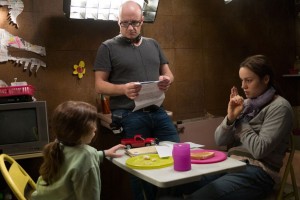 Interview - Lenny Abrahamson, the director of “Room” (2015)
Interview - Lenny Abrahamson, the director of “Room” (2015)
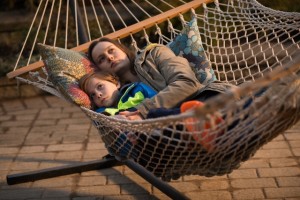
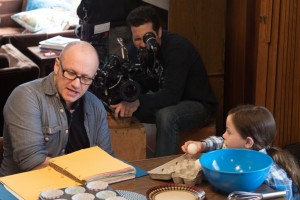 PFF: One of the pleasures of the film is Jack’s narration, as he explains the way he sees the world. What lessons can adults take by looking at life through a kid’s eyes?
PFF: One of the pleasures of the film is Jack’s narration, as he explains the way he sees the world. What lessons can adults take by looking at life through a kid’s eyes? 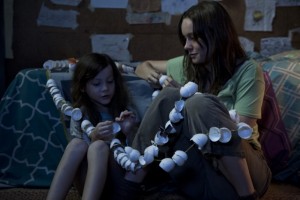
 “A well-designed ‘Steve Jobs’ leaves the audience wanting a future release”
“A well-designed ‘Steve Jobs’ leaves the audience wanting a future release”
 Bridge of Spies
Bridge of Spies
 “The foreclosure film ‘99 Homes’ serves stressful theatre”
“The foreclosure film ‘99 Homes’ serves stressful theatre”
 “He Named Me Malala” features an extraordinary woman in a less-than-perfect documentary
“He Named Me Malala” features an extraordinary woman in a less-than-perfect documentary








